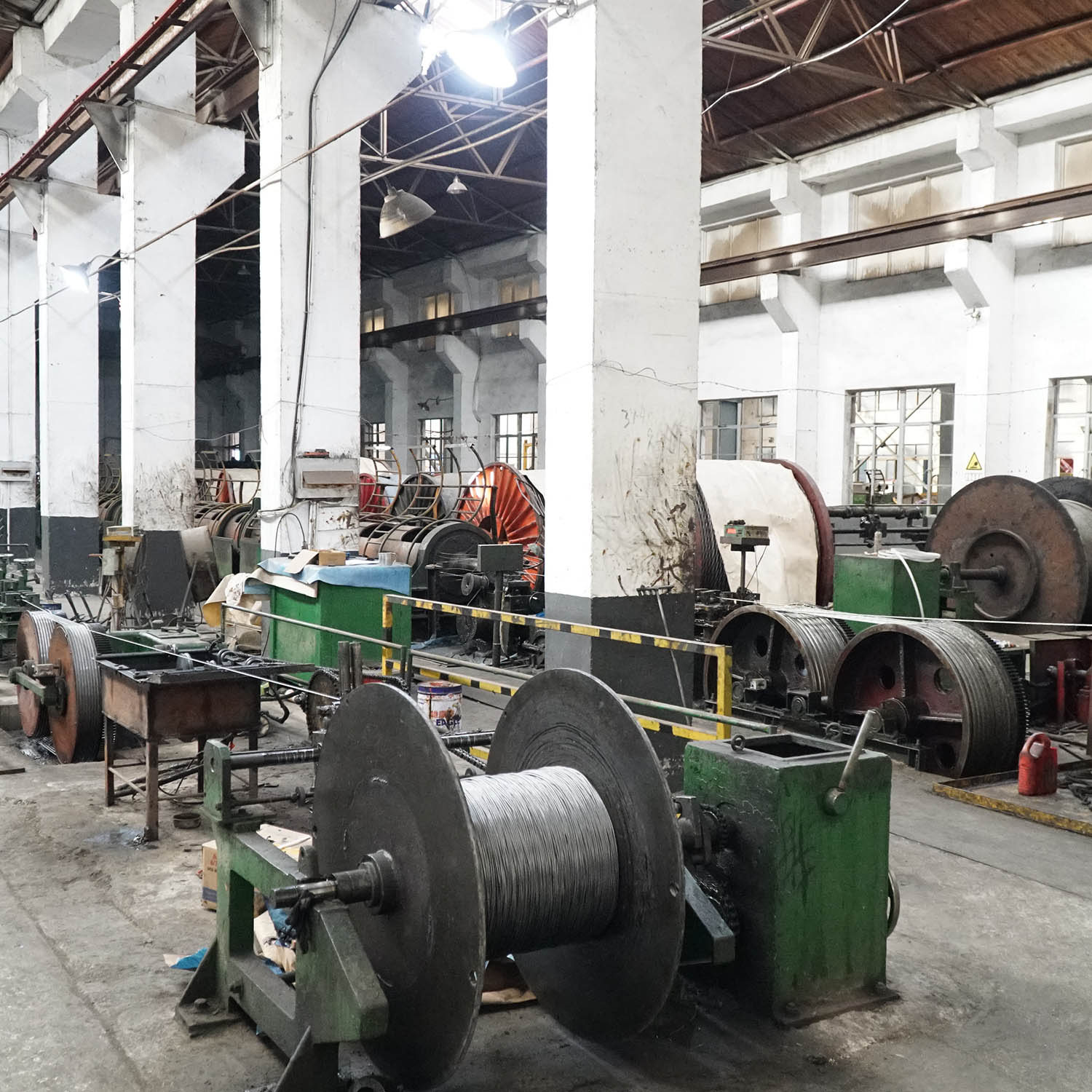Table of Contents
เหล็กและเหล็กกล้าคาร์บอนสูงเป็นวัสดุทั่วไปสองชนิดที่ใช้ในอุตสาหกรรมต่างๆ ตั้งแต่การก่อสร้างจนถึงการผลิต แม้ว่าวัสดุทั้งสองประกอบด้วยเหล็กและคาร์บอนเป็นหลัก แต่ก็มีความแตกต่างที่สำคัญระหว่างทั้งสองซึ่งทำให้เหมาะสำหรับการใช้งานที่แตกต่างกัน
เหล็กเป็นวัสดุอเนกประสงค์ที่ใช้กันอย่างแพร่หลายในอุตสาหกรรมการก่อสร้าง ยานยนต์ และการผลิต ประกอบด้วยเหล็กและคาร์บอน โดยมีธาตุอื่นๆ อีกเล็กน้อย เช่น แมงกานีส ฟอสฟอรัส ซัลเฟอร์ และซิลิคอน โดยทั่วไปปริมาณคาร์บอนในเหล็กจะอยู่ในช่วงตั้งแต่ร้อยละ 0.2 ถึงร้อยละ 2.1 ซึ่งให้ความแข็งแรงและความทนทาน
ในทางกลับกัน เหล็กกล้าคาร์บอนสูงจะมีเปอร์เซ็นต์คาร์บอนสูงกว่า โดยทั่วไปจะอยู่ระหว่าง 0.6 เปอร์เซ็นต์ถึง 1.5 เปอร์เซ็นต์ ร้อยละ ปริมาณคาร์บอนที่สูงขึ้นนี้ทำให้เหล็กกล้าคาร์บอนสูงมีความแข็งและแข็งแรงกว่าเหล็กกล้าทั่วไป มักใช้ในงานที่ความแข็งแรงและความแข็งมีความสำคัญ เช่น ในการผลิตเครื่องมือตัด มีด และสปริง
ความแตกต่างที่สำคัญประการหนึ่งระหว่างเหล็กกล้ากับเหล็กกล้าคาร์บอนสูงก็คือความแข็ง เหล็กกล้าคาร์บอนสูงมีความแข็งกว่าเหล็กกล้าทั่วไปมาก จึงเหมาะอย่างยิ่งสำหรับการใช้งานที่มีความสำคัญต่อความต้านทานการสึกหรอ ความแข็งนี้ยังทำให้เหล็กกล้าคาร์บอนสูงเปราะมากกว่าเหล็กกล้าทั่วไป ซึ่งอาจเสียเปรียบในการใช้งานบางอย่าง
ข้อแตกต่างที่สำคัญอีกประการระหว่างเหล็กกล้ากับเหล็กกล้าคาร์บอนสูงก็คือความสามารถในการแปรรูป เหล็กกล้าคาร์บอนสูงนั้นตัดเฉือนได้ยากกว่าเหล็กกล้าทั่วไปเนื่องจากมีความแข็ง มักต้องใช้เครื่องมือและเทคนิคเฉพาะทางในการทำงานกับเหล็กกล้าคาร์บอนสูง ซึ่งอาจทำให้ต้นทุนการผลิตเพิ่มขึ้น
แม้จะมีความแข็งและเปราะ แต่เหล็กกล้าคาร์บอนสูงก็มีความแข็งแรงและความเหนียวเป็นเลิศ สามารถทนต่อความเค้นและความเครียดในระดับสูงได้โดยไม่เสียรูปหรือแตกหัก ทำให้เหมาะสำหรับการใช้งานที่จำเป็นต้องมีความทนทาน
ในทางตรงกันข้าม เหล็กธรรมดามีความเหนียวและอ่อนตัวได้ดีกว่าเหล็กกล้าคาร์บอนสูง ซึ่งช่วยให้ทำงานและจัดรูปทรงได้ง่ายขึ้น ซึ่งเป็นเหตุผลว่าทำไมจึงนิยมใช้ในการใช้งานที่หลากหลาย ตั้งแต่โครงสร้างอาคารไปจนถึงชิ้นส่วนยานยนต์
ทั้งเหล็กกล้าและเหล็กกล้าคาร์บอนสูงต่างก็มีข้อดีและข้อเสียในตัวเอง ขึ้นอยู่กับลักษณะเฉพาะ ข้อกำหนดของแอปพลิเคชัน เหล็กธรรมดามีความหลากหลายและใช้งานได้ง่ายกว่า ทำให้เหมาะสำหรับการใช้งานที่หลากหลาย ในทางกลับกัน เหล็กกล้าคาร์บอนสูงนั้นมีความแข็งและแข็งแกร่งกว่า ทำให้เหมาะสำหรับการใช้งานที่ความต้านทานต่อการสึกหรอและความทนทานเป็นสิ่งสำคัญ
โดยสรุป เหล็กและเหล็กกล้าคาร์บอนสูงเป็นวัสดุสำคัญสองชนิดที่ใช้กันอย่างแพร่หลายในอุตสาหกรรมต่างๆ แม้ว่าทั้งสององค์ประกอบจะประกอบด้วยเหล็กและคาร์บอน แต่ก็มีความแตกต่างกันอย่างชัดเจนในแง่ของความแข็ง ความสามารถในการแปรรูป และความแข็งแรง การทำความเข้าใจความแตกต่างเหล่านี้ถือเป็นสิ่งสำคัญในการเลือกวัสดุที่เหมาะสมสำหรับการใช้งานเฉพาะ ไม่ว่าคุณจะต้องการวัสดุอเนกประสงค์และง่ายต่อการใช้งาน หรือวัสดุที่แข็งและทนทาน เหล็กกล้าและเหล็กกล้าคาร์บอนสูงก็ครอบคลุมไว้
Steel and high Carbon Steel are two common materials used in a variety of industries, from construction to manufacturing. While both materials are composed primarily of Iron and carbon, there are key differences between the two that make them suitable for different applications.
Steel is a versatile material that is widely used in construction, automotive, and manufacturing industries. It is composed of iron and carbon, with trace amounts of other elements such as manganese, phosphorus, sulfur, and silicon. The carbon content in steel typically Ranges from 0.2% to 2.1%, which gives it its strength and durability.
High carbon steel, on the other hand, contains a higher percentage of carbon, typically between 0.6% and 1.5%. This higher carbon content makes high carbon steel harder and stronger than regular steel. It is often used in applications where strength and hardness are critical, such as in the production of cutting tools, Knives, and Springs.
One of the main differences between steel and high carbon steel is their hardness. High carbon steel is much harder than regular steel, making it ideal for applications where wear resistance is important. This hardness also makes high carbon steel more brittle than regular steel, which can be a disadvantage in some applications.
Another key difference between steel and high carbon steel is their machinability. High carbon steel is more difficult to machine than regular steel due to its hardness. Specialized tools and techniques are often required to work with high carbon steel, which can increase production costs.
Despite its hardness and brittleness, high carbon steel has excellent strength and toughness. It is able to withstand high Levels of stress and strain without deforming or breaking, making it ideal for applications where durability is essential.
In contrast, regular steel is more ductile and malleable than high carbon steel. This makes it easier to work with and shape, which is why it is commonly used in a wide range of applications, from building structures to automotive components.
Both steel and high carbon steel have their own advantages and disadvantages, depending on the specific requirements of the application. Regular steel is more versatile and easier to work with, making it suitable for a wide range of applications. High carbon steel, on the other hand, is harder and stronger, making it ideal for applications where wear resistance and durability are critical.
In conclusion, steel and high carbon steel are two important materials that are widely used in various industries. While they are both composed of iron and carbon, they have distinct differences in terms of hardness, machinability, and strength. Understanding these differences is essential for choosing the right material for a specific application. Whether you need a versatile and easy-to-work-with material or a hard and durable material, steel and high carbon steel have you covered.


